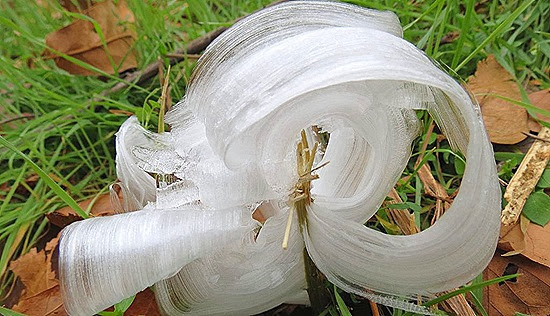
When it's cold enough for water to turn from liquid to solid, odd things can happen. Indeed, odd things can also happen when temperatures are just right for water to turn from solid to gas, skipping the liquid part entirely. Or when the wind blows at just the right speed, or water moves at just the right pace. In other words, when conditions are just perfect for strange, we get the following unusual ice formations.
1. Penitentes
Photo: sergejf/Flickr
Found in the Dry Andes above 13,000 feet, these tall pinnacles of snow and ice are a strange sight. They are penitentes, and can range in size from an inch or two to over 16 feet tall. The word "penitentes" is Spanish for "penitent-shaped snows" because these unusual snow formations look like the penitentes, religious people of the Procession of Penance who wear tall, pointed hoods in the processions during Spanish Holy Week.
Photo: Ascalise/Wikipedia
These jagged structures form in a process called sublimation, something similar to melting except that the sun turns the snow directly into water vapour without melting first. Essentially the ice goes from solid to gas and skips the liquid stage. The dew point has to stay below freezing for this to happen. Starting out with a smooth layer of compressed snow or ice, the sun heats up curved areas of the surface which sublimate faster than others, with the process accelerating as the depressions are formed, ending up with the penitentes structures. Because the process depends on the heat from the sun, with sublimation happening more rapidly in the depressions formed, penitentes lean in the general direction of the sun's rays.
2. Rabbit ice
Photo: MarkInspex/Flickr
This strange ice formation goes by several names, including ice flowers, ice ribbon, rabbit ice, rabbit frost, ice wool and more. But the process is the same whatever the name. Rabbit ice forms when the air hits freezing temperatures but the ground has not yet frozen. Sap in the stems of plants expands as it freezes, causing cracks to form along the stem. Water is then drawn out through the cracks, freezing as it hits the air, and forming layer after thin layer as more water is drawn out, eventually creating petals or ribbons of ice.
Photo: MarkInspex/Flickr
A similar phenomena happens with woody plants, though the resulting ice is thinner and more hair-like. Because the ice formations are very thin and delicate, they usually melt or sublimate quickly, so your best chances of spotting rabbit frost is in the early mornings in shaded areas when weather conditions are just right.
3. Needle ice
Photo: Jared Stanley/Wikipedia
Like rabbit ice, needle ice goes by many names including ice castles, frost columns, ice fringes, or ice filaments. Basically needle ice is a type of ice flower, occurring in a similar way.
Photo: Thomas Bresson/Wikipedia
When the temperature of the soil is above freezing, and the temperature of the air is below freezing, water flowing below the soil's surface is drawn up through capillary action, and it freezes on contact with the air. More water is drawn up and freezes, and ice is formed in a needle-like column. While the process is simple enough, the resulting delicate "hair" growing up from the ground is something rather amazing to look at.
4. Frost flowers
Photo: Video Screenshot
Yet another version of frost flowers can be found floating on the surface of newly frozen sea ice or lake ice. Also called frost blossoms or Arctic blossoms, these little ice formations are quite interesting to scientists. In 2009, a biology team from University of Washington was sailing near the North Pole when they found a vast field of these little ice blossoms. When they melted a few, they found that they hold an unusually large amount of bacteria.
Firstly, let's cover how they form. Here's how NPR explains it: "[T]he air was extremely cold and extremely dry, colder than the ocean surface. When the air gets that different from the sea, the dryness pulls moisture off little bumps in the ice, bits of ice vaporize, the air gets humid - but only for a while. The cold makes water vapour heavy. The air wants to release that excess weight, so crystal by crystal, air turns back into ice, creating delicate, feathery tendrils that reach sometimes two, three inches high, like giant snowflakes. The sea, literally, blossoms."
Photo: Video Screenshot
Now here's why they're scientifically fascinating: We mentioned that these frost flowers contain a surprising amount of bacteria. Because of the way they form, frost flowers have three times the salinity of the ocean, and not much could live in such salty frozen water. Or so we think. But the researchers found about a million bacteria living in each frost flower. More research could reveal just what the bacteria are up to in those blossoms and how they manage to survive. While this seems like a rare icy event, Jody Demming, a professor at University of Washington, thinks that we will see more of these “meadows” of frost flowers in the future, because as the planet warms there will be more open water at the poles that will turn to thin ice in winter.
These screenshots come from this great video about the phenomenon on Weather.com. Check it out to learn more.
5. Snow rollers
They look a lot like baled hay made of snow. And in a way, that's a pretty accurate description. In a similar way to how hay is rolled up into large balls, a snow roller is formed as a chunk of snow is blown along the ground by the wind, picking up more snow as it rolls and growing in size. They are cylindrical, and usually hollow since the first few layers to form usually flake away pretty easily as the rollers get, well, rolling. They can get as big as two feet in diameter.
Snow rollers usually happen when there is a fresh layer of loose snow on the ground and the temperature is near melting. The snow also needs to be on a surface to which it doesn't easily stick - such as icy snow - so that the top layer of snow sticks to the roller rather than the ground. Plus there needs to be enough wind to get the roller going but not so strong that everything breaks apart. Because the conditions are fairly precise, snow rollers are quite rare.
6. Ice circles
Another rare ice formation are ice circles, or ice discs, which form in the bends of rivers. As a layer of ice is formed over the water, the current of accelerating water underneath creates a "rotational shear", breaking off a chunk of ice and twisting it until it forms a circle. Then there it stays, a circle of ice slowly rotating in the bend of a river. An odd thing to behold, and something not spotted very often. However, an ice circle of approximately 50 feet in diameter was photographed in Lake Katrine, New York on the Esopus Creek on January 23, 2014.
The above is an ice circle in motion, filmed in Idaho earlier this year.
7. Pancake ice
Similar to an ice circle is pancake ice or pan ice. Pancake ice is formed when ice on water is broken up and spins in the eddy of a river or stream, forming thin circles. It can happen as long as the temperature is right around freezing point and there is still moderate water movement.
This kind of ice formation can range in size from a foot or so across to nearly 10 feet across, depending on conditions. Often the discs will gather slush, or frazil ice, on the edges as they spin around and bump into each other, and become what's called a "hanging dam," which is a circle of ice with high edges and a low centre.
Related posts on Mother Nature Network:
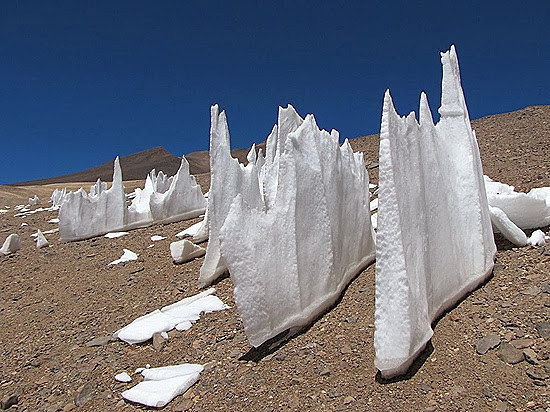

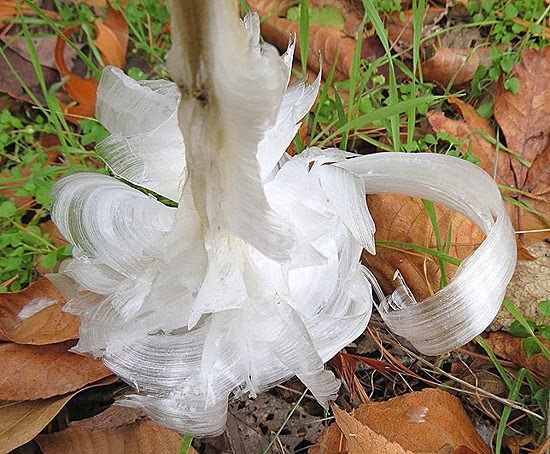
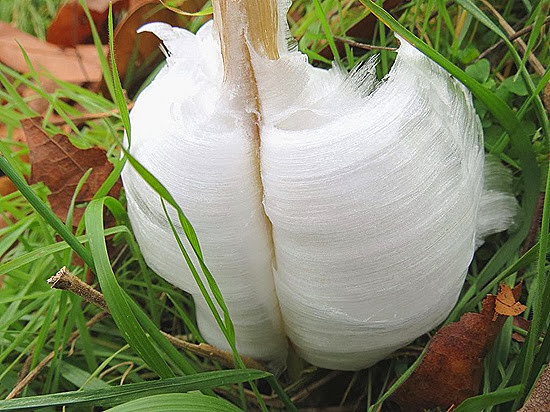
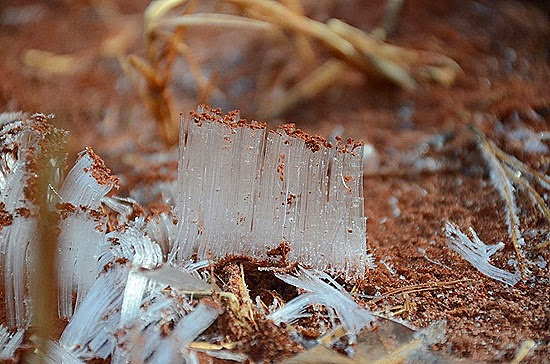
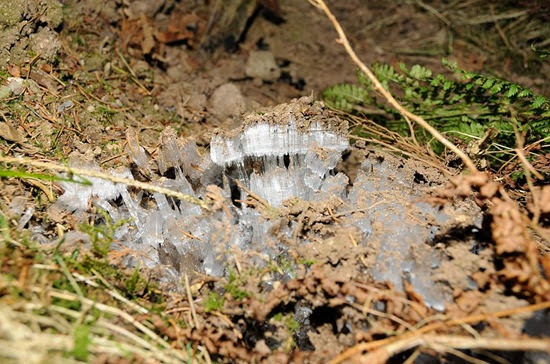

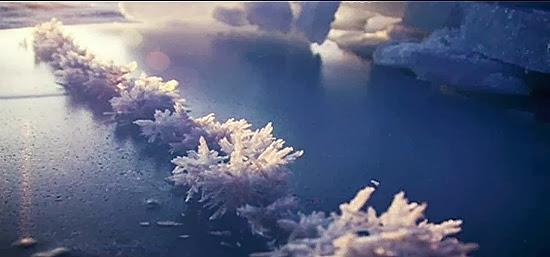

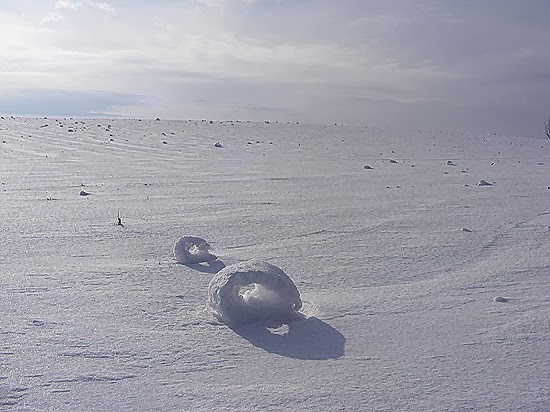
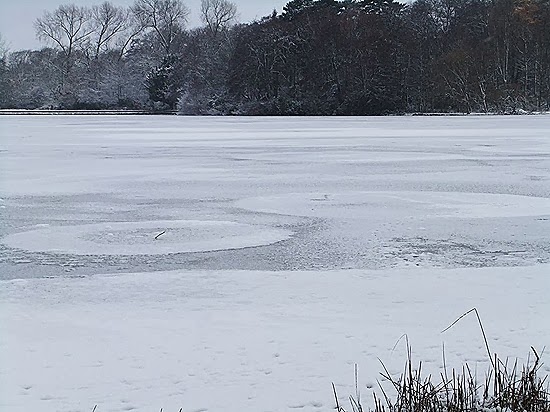


No comments:
Post a Comment
Please adhere to proper blog etiquette when posting your comments. This blog owner will exercise his absolution discretion in allowing or rejecting any comments that are deemed seditious, defamatory, libelous, racist, vulgar, insulting, and other remarks that exhibit similar characteristics. If you insist on using anonymous comments, please write your name or other IDs at the end of your message.